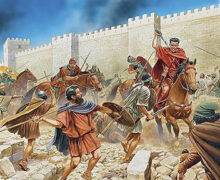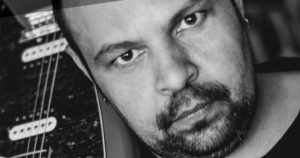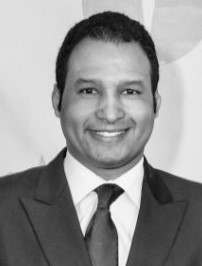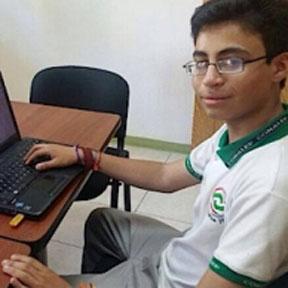“Atrocities, real and imagined”
Many in the Western Hemisphere were joyous when a Jesuit priest from Argentina was elected Pope of the Roman Catholic Church. When he announced in January 2015 that the Church would make Franciscan missionary Junipero Serra of California missionary fame a saint, many Catholics were delighted.
Father (Padre) Junipero Serra will be the first Hispanic saint from the Western Hemisphere. He was born in Spain, of course, but his fame was made in California founding the California missions from San Diego (1769) to San Francisco. Altogether 21 missions were founded by Serra and his associates.
He brought Christianity to the West. Secondly, he ensconced Spanish domination over the area in response to Russian intrusion from Alaska. Thirdly, he founded California agriculture, created irrigation and assisted the civil authorities in creating and nurturing towns that eventually grew to be world class cities like Los Angeles, San Diego and San Francisco.
His most important accomplishment, however, was his conversion of native people he to Christianity.
Contrary to critics, he did not oversee the death and destruction of native people. Only a third of them were ever converted and/or lived at the missions. The other two-thirds simply continued their Stone Age existence of picking berries, gathering sea life and hunting deer, bear and rabbits. These California native peoples were not accomplished Maya or other Mexican Indians with cultures revolving around mathematics, astronomy, armies and creative/inventive agriculture.
The Archivist Emeritus of the Diocese of Los Angeles (Monsignor Francis Weber) declared after a lifetime of research that “most of the hostility to Serra comes from descendants of the non-Christianized natives.”
Critics like Deborah A. Miranda who teaches American Literature at Washington & Lee University in Virginia, says: “Serra did not just bring us Christianity, he imposed it, giving us no choice in the matter. He did incalculable damage to a whole culture.”
That is a wild over-statement to make considering that only a third of California Indians ever lived on a mission. Nonetheless, critics like Miranda continue to perpetrate “myths” about Father Serra. They charge that the priests controlled the Indians by force, by whippings, death by atrocities and the hijacking of culture. The truth is that on balance Father Serra and the missions were a positive for Indians.
Certainly, many Indians died from white man-borne diseases like measles and small pox, but those deaths are not “atrocities.” Certainly some Indians were punished when they violated rules but being punished by priests was better than being punished by the Spanish civil administration and soldiers. If these critics want to talk about atrocities they should have been with me recently when I visited Guba (Goobah) a city in the Republic of Azerbaijan.
There on March 31st, 1918, a combination of Armenian radicals called “Dashnaks” combined with Armenian and Russian Communists to “cleanse” Jews and Azeris from the province of Guba that had been under Russian governance since the early 1800s. This atrocity’s goal was to create an Armenian communist republic.
These troops rounded up and killed any Azeris and Jews they could find. They then dragged people out of their homes and killed them.
The Armenians called their “Dashnak” troops – The “Punishment Brigade.” They killed tens of thousands of Azeris, Jews and other minorities in these few days in March and April of 1918. History, with Armenian help, has smugly passed over the slaughter. A construction project has revived the bloody events of almost a hundred years ago. Workers stumbled onto a mass grave of Azeri/Jewish victims in 2007.
The Azeri’s have built a monument – The Guba Genocide Memorial Complex — to the victims and documented with heavy research and many, many photographs of the events, the massive destruction of Guba and surrounding villages and the massacre’s aftermath. Surprisingly and shockingly there is more to the memorial than photos, weapons and documents to be seen and understood.
In a protected and covered area is an archeological dig that has uncovered — thousands of bones and skulls of victims circa March 31, 1918. It took my breath away when I was escorted into the protected area. These bones and skulls were not laid out on tables for study, they were there compacted by several feet of dirt that was shoveled onto the bodies by their murderers who tried to cover-up their hideous war crimes.
It shocked me – shocked me — to see the bones of hundreds of men, women and children killed by the Armenians and their Communist partners. It shocked me, it depressed me, and it made me detest barbarians.
Perhaps critics of Father Serra should visit the Guba monument to see what atrocities really are. Then maybe they can join Professor Robert G. Miranda and this writer in contending “that the California Indian fared far better under the mentoring and tutelage of the friars and the mission system than under any other system of governance in vogue in the late 18th through the 20th Century.”
Perhaps their views would change if they saw the bones of hundreds of real atrocity victims at Guba that I saw.
Contreras formerly wrote for Creators Syndicate and the New American News Service of the New York Times

























